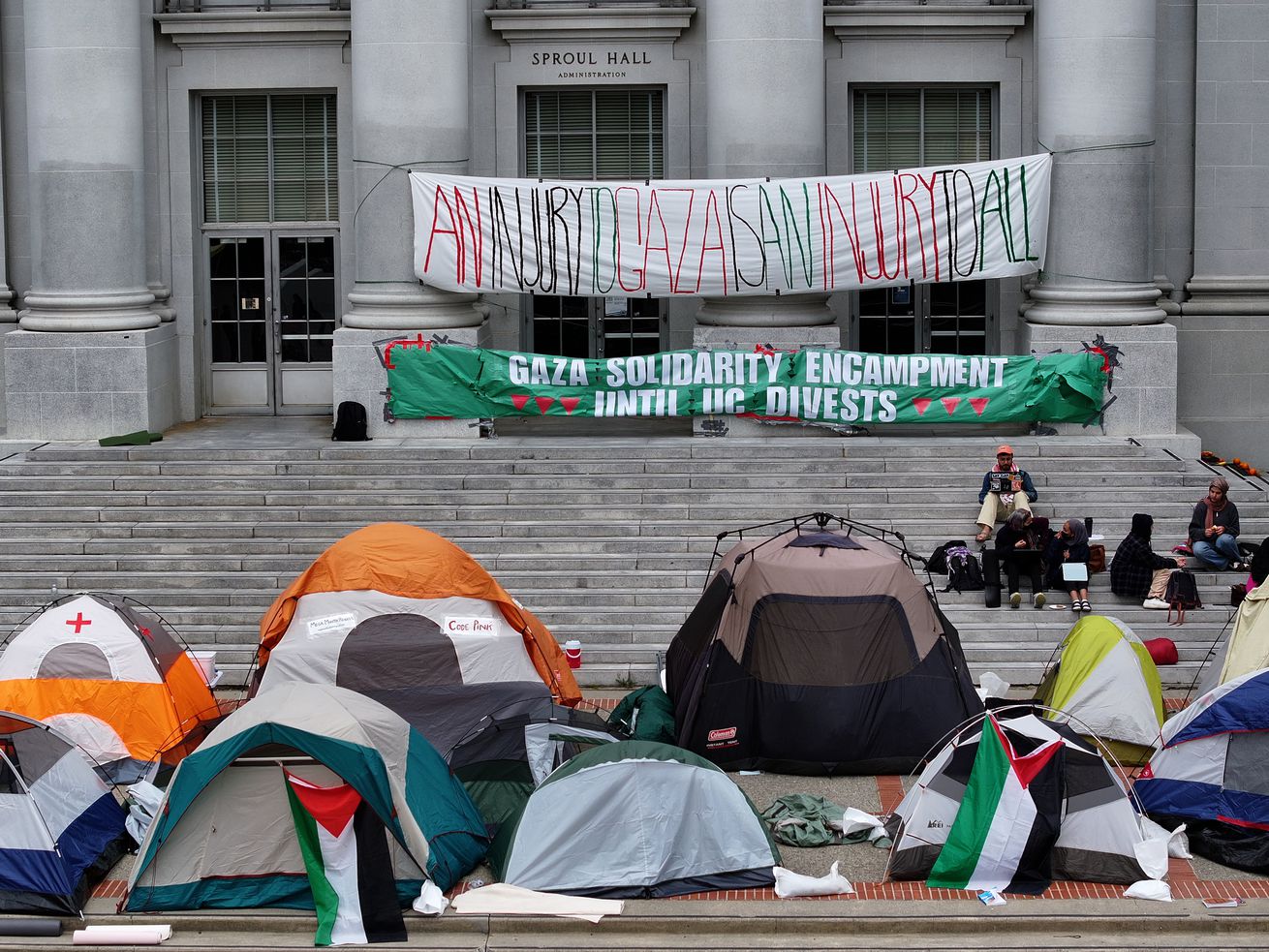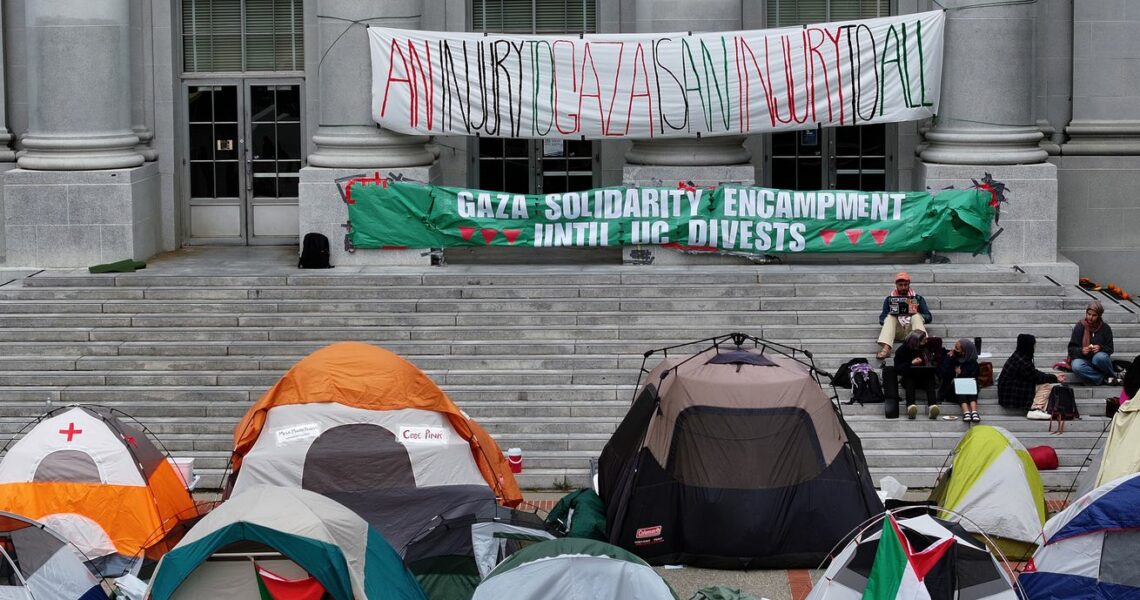
Derek and political science professor Omar Wasow talk about what made 1960s protests different, how protests succeed, how protests backfire, and how Wasow’s research applies to today
In the last week, hundreds of protests across college campuses and American cities have taken place in response to the war in Gaza. Campus life has shut down at Columbia University in NYC. The news is strewn with images of police confrontations on campuses, from Texas to California. Hundreds of demonstrators across the country have been taken into police custody. And many people now anticipate that, without a major course correction in the war in Gaza, demonstrators will converge on the Democratic National Convention in Chicago, in a replay of the infamous 1968 anti-war protests and police riots that defined that national convention. Next week, we’re going to have a full episode on the war itself. Today, I want to talk about the nature of protest itself. Omar Wasow, a professor of political science at UC Berkeley, is the author of an influential paper about the history of 1960s protests. Today we talk about what made the 1960s protests different, how protests succeed, how protests backfire, and how his research applies to today.
If you have questions, observations, or ideas for future episodes, email us at PlainEnglish@Spotify.com.
In the following excerpt, Derek and Omar Wasow compare and contrast different eras of protests, from the 1950s up to today.
Derek Thompson: So today, with protests spreading across the country of the war in Gaza and the rising likelihood of major protests at the Democratic National Convention this summer, I really wanted to talk to you about how this moment compares to similar protests in the 1960s. In 2020, you published a paper on the effect of 1960s protests on elite opinions. Before we get into that paper and exactly what you found, I would love you to situate it within the larger literature in this space. What had been the prevailing wisdom? Did previous political scientists find that mass protests often succeed, or were they generally of the opinion that protesters are screaming into the void?
Omar Wasow: It’s a great question, and there’s a large body of work in political science and sociology that’s looked at this, and there’s a range of results. But in political science, the dominant position has been that elites really dominate political communication. There’s work by, for example, two scholars—Gilens and Page—that looked at a wide range of issues and just found that mass influence on these different issues was almost nonexistent. There were people like lobbyists who had some influence and there were other elite actors—say, in the media—who had influence, but the mass public had very little influence. There’s other work by scholars like Maria Stephan and Erica Chenoweth that found cross-nationally nonviolent protests were successful about 50 percent of the time, and protests that had some degree of violence, about a quarter of the time. So there has been some evidence of success, but broadly in the U.S. context, the sense is elites dominate political communication and sort of these bottom-up voices often go unheard.
Thompson: I’m going to hold on a couple words that you said and remind myself and listeners, we’re going to get back to them later in the show. Political opinion, elite opinion, is fundamentally a top-down phenomenon. Protests are, by definition, a bottom-up phenomenon. There’s no point in protesting something if all the elites already agree with you. There are some ways in which I think the world is becoming a little bit more upside down, a little bit more bottom-up. And so, I’m interested in your opinion about that, but I’m putting that in the refrigerator and keeping it for later. First, if you could, set the scene of the 1960s protests. What should we know about the protests, their political context? Maybe the right way to frame this is: What have we potentially forgotten about the protest environment of the 1960s that is so important to remember today, given the environment of protests right now?
Wasow: So very generally—I mean, not just in the 1960s—protest movements tend to be episodic, and so you have these waves of activity and then it often fades rather quickly. And what we see in the 1960s, and it really even begins in the late 1950s, is this kind of building set of sit-ins and people trying to integrate buses. And that activity builds quite dramatically in the early 1960s in terms of activity. You see events like the march on Washington: a quarter of a million people converging on D.C. And then there’s this sort of remarkable period of legislation, ’64 Civil Rights Act, ’65 Voting Rights Act. And then it starts to fade rather quickly in that kind of episodic model and are consistent with that kind of episodic model. And then what we see in the kind of latter half of the ’60s and early ’70s is another wave, but where the protests often escalate to violence—protestor-initiated violence, not just violence by the state against protesters.
Thompson: Last question before we jump right into your paper. The civil rights protests (so the late 1950s and 1960s): Were there ways in which these protests were qualitatively different from previous eras of protest, whether it was for women’s right to vote or labor strikes or Luddite-style protests against the introduction of new technologies? Is there something that political scientists who study protests set aside the ’50s and ’60s civil rights protests away from these previous generations of protests because they were just different in some way?
Wasow: So I think that’s a really good question. And there are a number of things that we might point to in the 1960s. I mean, one thing that I loop on a lot is that in 1950, something like 2 percent of people had a television and by 1960, more than 90 percent of people had a television in their home. And so there’s this really radical transformation in the media environment in that era, and that lays the groundwork for a different kind of visual style of protest. There’s a great book, a Pulitzer Prize–winning book on the history of reporting on the civil rights movement called The Race Beat. And what they show in that book is that, essentially, civil rights, when TV news first comes out in the ’60s, people are trying to figure out: What is this good for? They have 15 minutes a day, and they don’t know what to do with it.
And essentially, to use a modern term, civil rights protests become the killer app of TV news, and it sort of justifies the existence of TV news. And there’s this whole wave of national reporting from outside of the South that starts to cover the civil rights movement and really creates a different kind of protest strategy, which is that you create these very dramatic events that then help to get national and international news coverage that puts pressure on local actors. That, I think, is distinctive. It’s not totally novel. There are people doing things in earlier periods that look like that, but just the media environment makes this much more available as a strategy.
This excerpt was edited for clarity. Listen to the rest of the episode here and follow the Plain English feed on Spotify.
Host: Derek Thompson
Guest: Omar Wasow
Producer: Devon Baroldi
Subscribe: Spotify

